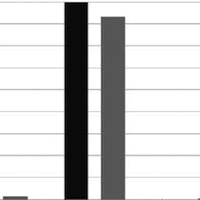Expression of miR-132 and miR-212 in prostate cancer and metastatic lymph node: Case report and revision of the literature

Accepted: March 11, 2020
All claims expressed in this article are solely those of the authors and do not necessarily represent those of their affiliated organizations, or those of the publisher, the editors and the reviewers. Any product that may be evaluated in this article or claim that may be made by its manufacturer is not guaranteed or endorsed by the publisher.
MicroRNAs (miRNAs) are a class of small, non-coding RNAs that act as key regulators in various physiological and pathological processes as prostate cancer (PCa). In this study we describe molecular evaluation of 132 and 212 miRNAs expression, by Real-time reverse-transcription PCR (qRT-PCR), in a Caucasian man 64-year-old with locally advanced PCa (PSA 160 ng/ml, Gleason score 4+3/ISUP Grade Group 3, clinical stage T3NXM0) who underwent radical retropubic prostatectomy plus extended pelvic lymphadenectomy (LAD) as first step of a multimodal therapeutic treatment. A normal prostate of a 67-year-old man removed by post mortem autopsy was used as a control in the study. The mRNA for this study was conducted on paraffined prostatic sections of: a) index case of PCa; b) metastatic lymph node of index case; c) normal prostate. MiRNA-132, miRNA- 212 and Glyceraldehyde 3-phosphate dehydrogenase (as reference gene) assays were obtained. Definitive specimen showed a pT3bN1R1 stage: acinar cells adenocarcinoma with involvement of the seminal vesicles, multifocal positive surgical margins, Gleason score 8 (4+4/ISUP Grade Group 4), metastases in 5/25 iliac lymph nodes. An increased expression of miRNA-132 and miRNA-212 in index case of prostatic adenocarcinoma compared to normal prostate tissue was found; moreover, a lower expression of miR-132 and miR-212 in metastatic lymph node compared to primitive PCa and normal prostate tissue was demonstrated. Although a greater number of patients should be evaluated, these data suggest that the biology of the primary PCa, in our clinical case, was different from metastatic lymph node.
Malik ZI, Fenwick JD.: Radiotherapy to the Primary Tumour for Patients with Metastatic Prostate Cancer: Practice-Changing Results from STAMPEDE. Clin Oncol (R Coll Radiol). 2020 Jan 20. pii: S0936-6555(19)30540-0. doi: 10.1016/j.clon.2019.12.010. [Epub ahead of print] DOI: https://doi.org/10.1016/j.clon.2019.12.010
D'Antonio A, Caputo A, Fraggetta F, Pepe P, Insabato L, Barra E, Barresi V, Altieri V, Greco U, Savastano R, Zeppa P.: KPNA2/ERG Coexpression is Associated With Early Recurrence in Advanced Prostate Cancers. Appl Immunohistochem Mol Morphol. 2020; 28: 62-66. DOI: https://doi.org/10.1097/PAI.0000000000000706
Pepe P, Fraggetta F, Candiano G, Aragona F: Does Ki-67 staining improve quantitative histology in preoperative prostate cancer staging? Arch Ital Urol Androl. 2012; 84: 32-35.
Hassan O, Ahmad A, Sethi S, Sarkar FH. Recent updates on the role of microRNAs in prostate cancer. Journal of Hematology and Oncology 2012; 5:9. doi: 10.1186/1756-8722-5-9. DOI: https://doi.org/10.1186/1756-8722-5-9
Formosa A, Lena AM, Markert EK, Cortelli S, Miano R, Mauriello A, Croce N, Vandesompele J, Mestdagh P, Finazzi-Agrò E, Levine AJ, Melino G, Bernardini S, Candi E: DNAmethylation silences miR-132 in prostate cancer. Oncogene 2012; 32: 127-134. DOI: https://doi.org/10.1038/onc.2012.14
PAGEPress has chosen to apply the Creative Commons Attribution NonCommercial 4.0 International License (CC BY-NC 4.0) to all manuscripts to be published.


 https://doi.org/10.4081/aiua.2020.3.209
https://doi.org/10.4081/aiua.2020.3.209



